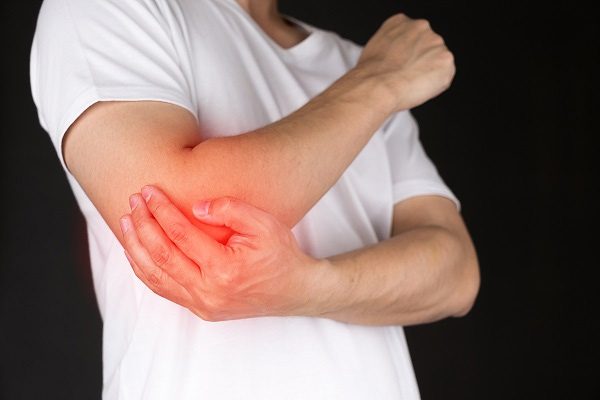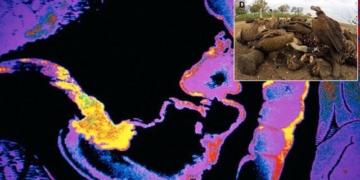Tennis Elbow Syndrome is a condition characterized by pain at the elbow due to inflammation of the tendons attached to the outer epicondyle of the humerus.
What is Tennis Elbow Syndrome?
This article is professionally consulted by Dr. Pham Thi Binh Minh, University Medical Center Ho Chi Minh City – Facility 3.
Definition
Tennis Elbow Syndrome usually occurs due to overuse or repetitive movements of the wrist and elbow.
The term “tennis elbow” means “the elbow of a tennis player,” but tennis players are not the only ones who experience this syndrome. Tendon inflammation from Tennis Elbow can also occur in many people across various ages.

Tendon inflammation from Tennis Elbow can affect many people. (Illustrative image).
Symptoms
– Patients experience pain in the elbow area, primarily on the outer side, radiating down the forearm and wrist.
– The elbow may swell, turn red, or remain unaffected.
– Pain intensifies with movement or during activities such as:
- Gripping an object or lifting something.
- Turning a doorknob.
- Wringing a towel.
- Opening a bottle cap.
- Raising the arm or extending the wrist.
Causes
- Injury due to overuse and muscle strain.
- Repetitive contraction of wrist extensor and finger extensor muscle groups.
- Repetitive movements and muscle strain can lead to small tears in the tendons, causing inflammation.
Who is Most Affected by Tennis Elbow Syndrome?
- Age: The condition can affect individuals of all ages, but it is most common among those aged 30 to 50.
- Occupation: Those whose jobs involve repetitive wrist and arm movements, such as plumbers, painters, carpenters, butchers, chefs, office workers, etc.
- Individuals participating in racket sports like tennis and badminton.
Diagnosis
Tennis Elbow Syndrome is relatively easy to diagnose through a clinical examination. The doctor may apply pressure to the elbow area or ask the patient to extend the wrist and fingers. Additionally, a definitive diagnosis may be confirmed through soft tissue ultrasound imaging.
In some cases, if the doctor suspects other causes, X-rays or electromyography may be recommended.
Treatment
Early treatment can lead to complete recovery without any long-term effects. Treatment methods include:
– Resting and avoiding activities such as wrist extension and lifting heavy objects.
– Using a compression bandage to stabilize the elbow area.
– Taking anti-inflammatory and pain-relieving medications.
– Engaging in physical therapy.
– Surgery may be indicated if the patient experiences persistent pain despite medication for 6 to 12 months.
– Traditional medicine treatment: This has been shown to effectively reduce pain immediately after one session, with no side effects.
- Using remedies that promote blood circulation and energy flow.
- Acupuncture, electro-acupuncture, laser acupuncture.
- Thread embedding therapy.
- Herbal poultice.
- Massage and acupressure.
What does back pain while breathing signify? Is it dangerous?
Respiratory syncytial virus infection: Causes, symptoms, and treatment


















































